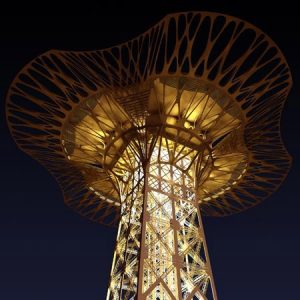
On Eiffel Tower’s 120th anniversary, its operator Société d’Exploitation de la Tour Eiffel held a remodeling competition to create more viewing space on the tower. Serero Architects, who proposed Eiffel DNA has won the competition. They proposed putting a carbon Kevlar structure made out of metal panels to the top of the tower and doubling the amount of viewing space.

It is called Eiffel DNA because it uses a generative computer script to copy the pattern from the old structure, and then “grow” new branches from the primary structure of the tower. This redundancy, non-repetition of pattern, and complex woven form are three interconnected structural weaves generated by the computer script. It also has curvatures unfold alone the tower.

As an architecture student, this project has introduced a new design method to me. I always like new technology and how technology can combine with art to create something unique. Eiffel DNA proved that the computer can be used to create architecture that better people’ life and the society. The new structure, although is not built, fits in the big idea of growing out of the tower and adds a new life to Eiffel. The generative design really gives designers the ability and flexibility to create something crazy. I do not know much about the algorithm, but I suppose they used some software similar to ph python in Grasshopper. No doubt, this is a project requires a lot of computational thinking.

![[OLD FALL 2018] 15-104 • Introduction to Computing for Creative Practice](wp-content/uploads/2020/08/stop-banner.png)